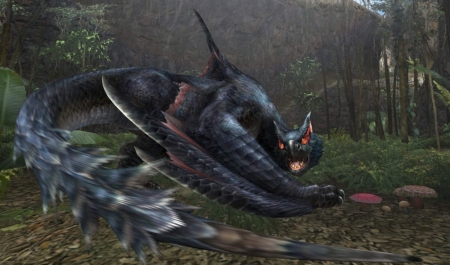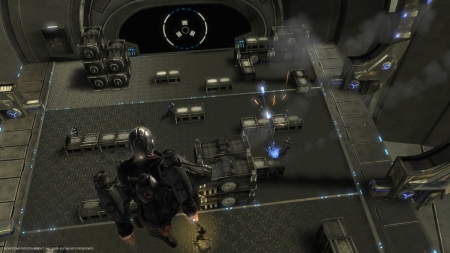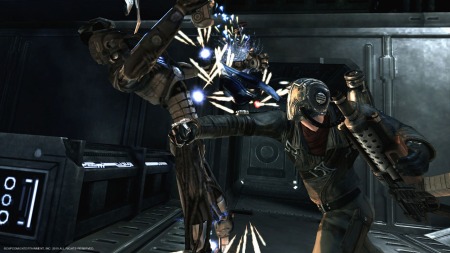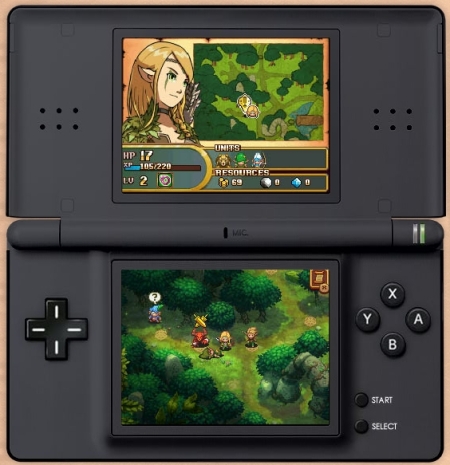I’m a loot whore, always has been, always will be. Monster Hunter Unite has been the meat of my PSP playtime, and Phantasy Star Portable the desert. I’ve beaten Demon’s Souls and collected most of the loot, played through Borderlands a couple times, and finished Torchlight.
Of all these games though, I found that Monster Hunter Unite was the most challenging and satisfying game of them all. So it isn’t any surprise that I’ve become interested in God Eater, a blatant Monster Hunter clone (I guess killing gods in Japanese games is too cliché nowadays, eating them is definitely the way to go).
God Eater is a success in Japan, topping the sales charts two weeks in a row after it’s release. It’s probably no surprise since it’s inspiration single handedly revived the PSP in Japan.
While the game has been announced for the US in Q3 2010, the demo remains a Japan only deal. Thankfully the demo is also available through a PC download, giving me an opportunity to try out the game. Keep in mind that I might miss certain elements of the game due to my lack of understanding of Japanese.
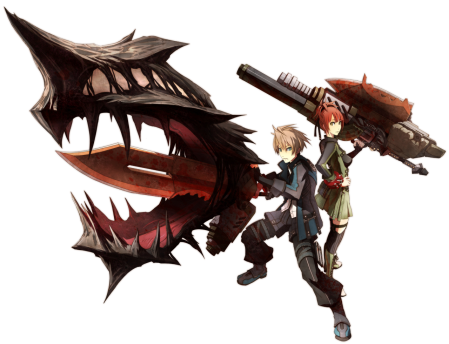
The customization when you start up a new character is pretty limited but gets the job done. You will be able to pick various options like the hair, face, and customize their colors as well as the characters skin tone. You can then mix and match your character’s outfit, but this option as well as hair style can be changed in the game as well.
After a cut scene and some dialog between several characters, I gained to control over my character in the main hub. This area gives you the option to purchase various goods such as potions, outfits, and weapons. There’s also an NPC that gives you various quests, a computer looking device that gives you options to store/take items, craft or upgrade new weapons and outfits among other things.
The game features an interesting weapon mechanic, your weapon can either transform into a sword or a gun. So in any given situation you can choose to use the most effective type with just a push of a button. The various parts of the weapon can be customized before the battle, there are three different gun or sword types you can use depending on their weight. While the gun doesn’t feel drastically different, each of the sword types have a different speed and damage parameter as well as their own unique special attack.
The weapon can also eat enemies and bosses for crafting material and gun ammunition. By holding down the triangle button in sword mode, the sword changes into a giant black mouth that takes a chomp at the enemy when the button is released. It gets fairly important to use this mechanic whenever a monster is staggered to gain a temporary boost in movement as well as some special ammo.
The transforming animation from gun to a sword, or vice versa, looks smooth but ultimately makes no sense what-so-ever. During the transformation the two parts either shrink or grow to impossible levels. It’s a rather unfortunate design decision since I think they could have easily incorporated a method that made physical sense.
After a couple training missions I finally got into an actual quest with 3 other A.I. buddies. The fight against the monster was pretty easy thanks to the dodge button that lets you quickly dash away from enemies. The tactic I found best was to hit the target with a short combo and dash away, then look for another opportunity to attack.
The game features a lock on system that can target individual body parts, something missing in Monster Hunter for better or worst. The feature is useful when focusing on breaking a specific body part, which leads to better rewards, but the targeting can occasionally be finicky since you might need to cycle between different parts to get to your intended target.
The A.I. companions make the game much more newbie friendly than it’s inspiration as well. They are more than capable of dishing out damage and distracting the enemy. They can also revive you during a fight as many times as they want. After another quest against the larger monster, however, I’ve found a few problems with the game.
As with Monster Hunter, you expect the enemies to deal massive damage to your character. But I found that I didn’t need to waste my potions even when I have very little health left. The healing potions only heal a miniscule amount of your HP, while A.I. partners can infinitely revive you. I ended up just fainting every time while waiting a couple seconds for the A.I. to save me. In all honesty, I believe the A.I. companions can defeat the boss without a singe input from the player. They are just too capable.
Thankfully, you can actually choose how many partners you take along in any given quest (from 0-3 partners). But since grinding for materials is an important aspect of the game, I wouldn’t be surprised if most players just exploit the system they have in place.

Another problem with the game is the environments. While it’s nice to have a single large area with no loading screens, the game has many drawbacks from using such a design.
First, there isn’t a whole lot of detail in the surroundings, making the game world feel really bland. One of the best aspects of Monster Hunter is that it manages to create an illusion that there’s a living world and ecosystem in the game. While the post-apocalyptic setting in God Eater can explain the lack of a thriving ecosystem, the areas mostly consist of square platforms and flat surfaces with little to no signs of rubble or destruction.
Secondly, if they have more than 1 boss type monster in an area there is no way to lure one out and fight them alone. While they aren’t grouped together from the start of a quest, considering that all boss monsters wander the given area, you’ll eventually end up with all of them bunched up together. In one particular quest, the game decided to pit me against 3 bosses. Oh, and here’s the kicker, I can’t bring any A.I. buddies to tag along. It’s an impossible hurricane of fury that only leads to a swift and confusing death.
There’s a similar sense of progression you’d expect from a Monster Hunter game. The crafting and upgrading of weapons is a pure joy. And while the bosses and creatures in the game aren’t as engaging in design or behavior, they are competent and unique in their own way. The combat is good and it doesn’t hurt that it feels faster than Monster Hunter.
Overall, it’s a decent stab at Monster Hunter, but similar to many games that clone successful titles, it ends up feeling a bit shallow and soulless in the end. Here’s hoping that I missed some key elements either due to the nature of a demo or the language barrier. I’m still looking forward to playing the US version of God Eater. Expect a review or another in-depth preview when the game finally arrives in the States.










